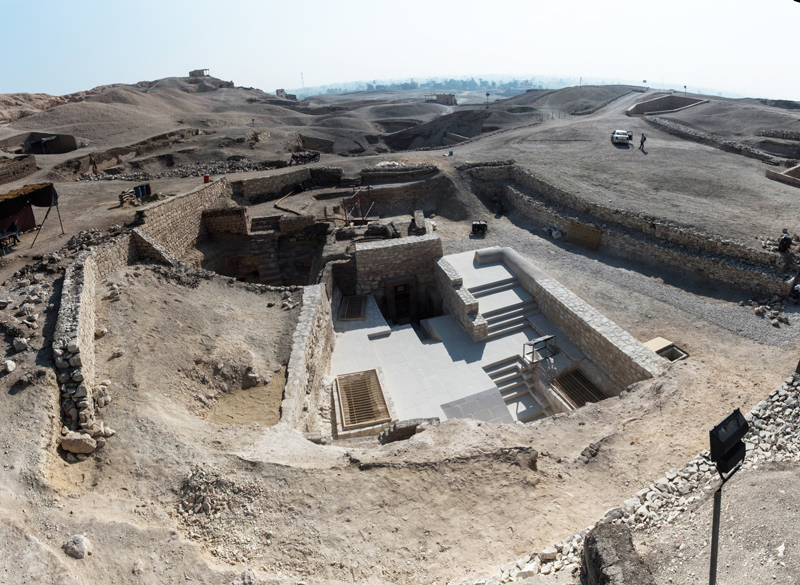- Era18th dynasty
- Project DirectorJohn Shearman
- LocationLuxor/Thebes
- AffiliationAmerican Research Center in Egypt (ARCE)
- Project SponsorUSAID
- Project Dates2015-2016
- Project ImplementerARCE
The tomb of Djehuty – also known as TT110 – belonged to a nobleman who acted as a royal official to two well-known rulers during their respective reigns. He served as a house manager under Hatshepsut and royal cupbearer under Thutmosis III, positions that carried great social and cultural weight in the Pharaonic period. Posts that required such intimacy with a ruler came tied with immense social status, both in the monarchical court and in ancient Egyptian society. This status is further reflected in the location of Djehuty’s tomb within the Theban Mountain Range on the West Bank of the Nile, which was considered a holy area that guaranteed a nobleman’s rank and proximity to the royal court into the afterlife.
The tomb’s discovery date is unknown, as the earliest reliable record dates to 1932. By that time, a significant portion of the tomb’s painting and decoration had been covered by dirt, heavy smoke and fire residue from human reuse of the space. Debris covered the original western entryway, and there was considerable damage at the pillared hall, a chamber at the tomb’s eastern end that contains the burial shaft. Due to the obstruction at the tomb’s entrance, an improvised entry to TT110 had been cut through the wall of an adjacent tomb.
The derelict condition of the tomb remained relatively unchanged until the American Research Center in Egypt, with support from the U.S. Agency for International Development, initiated a project to excavate and conserve TT110. Work on the project officially began in 2012, conducted through ARCE’s archaeological field school and a parallel conservation field school. The field schools provided an opportunity for hands-on experience and training for the participants, all of whom are conservators and archaeologists for the Egyptian Ministry of Antiquities. This integration of the field schools – which operated for three seasons over 27 months – gave the TT110 restoration an educational and community-oriented dimension and broadened the impact of the project.
Working in tandem, the two field schools excavated the debris from TT110 and cleaned and repaired the tomb’s interior decorations and structural damage. Excavation work focused largely on the entrance and forecourt of the tomb, and conservation work took longer because of the tomb’s complex interior conditions. An initial round of conservation work focused on reinforcing the tomb’s damaged walls by repairing the detached layers of plaster and filling in cracks and missing sections of the internal structure with lime mortar, epoxy and grout. Following the completion of this preliminary round, the conservation field school worked alongside the archaeological field school to remove nearly 16 feet (5 meters) of debris from TT10’s original entrance.
The following season, conservators cleaned the interior wall decorations, micro-sand blasted the blackened walls and ceiling in the uninscribed pillared hall to remove smoke damage, grouted and repaired the detached plaster wall surfaces and cracks and stabilized the tomb’s ceiling. One unexpected find was the well-preserved painted door jambs at the original entrance of the tomb. The painted decorations depict Djehuty himself making offerings. After being cleaned and treated by the conservators, the colorful paintings were safeguarded with a clear protective barrier. In the final stages of the TT10 conservation work, the project installed flooring and handrails for visitors, as well as solar-powered LED lights and information display panels at the entry of the tomb.
TT110 opened to the public in 2016. The ribbon-cutting ceremony was attended by officials from the Egyptian Ministry of Antiquities, the United States Agency for International Development and the United States Ambassador to Egypt, as well as graduates of the conservation field school in honor of their impressive restoration work on TT110.

